It’s a glorious summer day in Nova Scotia, Canada. I’m with a group of friends and a dozen or so strangers on one of those ‘off-the-beaten-path’ experiences that many travellers yearn for.
Off the beaten path in Nova Scotia
If deviating from the tourist trail appeals to you, grab a pair of rubber boots and head to Bramber Weir. It’s one of the best things to do in Nova Scotia in summer. Experience the highest tides in the world, and observe the workings of a centuries-old sustainable fishing technique. Revel in the infectious enthusiasm of young people engaged in something they’re passionate about. Admire how local, traditional, and academic knowledge come together to preserve the health of a marine ecosystem. Learn about fish species and conservation practices in a classroom on the ocean floor.
All this, and more, and I can guarantee you won’t be disappointed.
I can’t wait to go back next summer.
Bramber Weir Tour and Picnic
Had it not been for the Bramber Weir Tour and Picnic, I might not have discovered Bramber Weir.
While guests explored the weir, Chef Chris Velden of The Flying Apron Inn and Cookery prepared a picnic lunch at the high water mark. Sausages and freshly caught fish were cooked over an open fire. Salads and dessert rounded out the menu.
The motto of The Flying Apron Inn and Cookery in nearby Summerville is “We Do Local!” At least 90% of menu items come from within a 15-minute drive of the restaurant. The partnership with local farmers and fishers results in fresh locally sourced products. As a certified Ocean Wise Member, the Flying Apron uses only sustainable seafood.
It came as no surprise the restaurant teamed up with the weir workers to deliver such a quintessential Nova Scotian experience.
Bramber Weir, Bay of Fundy
We arrived a few hours before low tide. The three-metre-tall weir was out there somewhere, submerged under several metres of water. After all, we were on the shore of the Minas Basin where the tide ranges up to 17 metres, the highest in the world.
It was my first visit to this side of the Basin. I was more familiar with the northern shore. There, the notorious Bay of Fundy mud can devour a rubber boot in one gulp, and a rising tide can overtake a brisk walk. In fact, we would always leave the clam beds near Five Islands before the tide changed. There, the tide rises two metres in 20 minutes. As a result, I’ve developed a healthy respect for the Bay of Fundy and I was more than comfortable with having others lead the way.
The ebbing tide moved at the pace of a leisurely walk, exposing more of the weir with each step. My best guess is that it was about a kilometre offshore. At high tide, it’s covered with 12 metres of water.
Like us, the sandpipers followed the edge of the ebbing tide, a lucrative feeding area for shorebirds.
Diminutive semi-palmated sandpipers are only 13 to 15 cm long, and weigh between 20 to 32 g. Each year, they make the 6500-km flight from their breeding grounds in the Arctic to winter feeding grounds in South America. To fuel such an epic journey, they make a pit stop in the biologically rich Minas Basin. Their main food source on these shores is the mud shrimp. With densities of up to 60,000 per square metre, mud shrimp offer the birds a much-needed source of nourishment.
Poles, netting, rocks and sandbags
The weir sits in the inter-tidal zone on the southern shore of the Minas Basin. The 700 or so poles are arranged in a V shape, aligned to obstruct the natural path of fish leaving the shore on the ebbing tide.
In the spring, the poles are driven deep into the mud with the aid of an auger attached to a tractor. They’re then stabilized with rocks and sandbags.
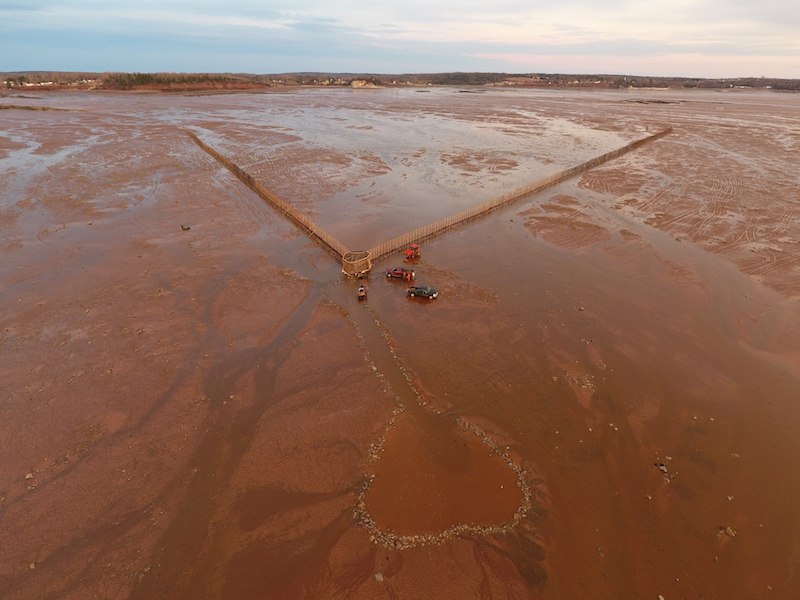 Photo credit: Marine Institute of Natural and Academic Science
Photo credit: Marine Institute of Natural and Academic Science
The weir is assembled in March and taken down in August, each exercise a month-long process. During the four months the weir is up, the netting needs to remain in shape to do its job, coaxing and guiding the fish along the wings of the weir. Repairs resemble patches on a quilt.
At the tip of the V is a circular net room trap. On a receding tide, fish follow the wings of the weir to the pool of water within the trap.
Fishing the weir
Beyond the net room trap on the seaward side is a channel to a 60-cm deep holding pool. This is for the released by-catch of protected, at-risk, and non-targetted species. These species remain in the pool until the incoming tide facilitates their release.
Because of their size and threatened status, sturgeon are the first to be removed from the trap and placed in the holding pool.
The Atlantic sturgeon comes from an ancient family of fish. It has remained virtually unchanged for millions of years, retaining a ‘dinosaur look.’ The species can grow to over 3 metres, and live up to 60 years or more. It’s found along the Atlantic coast, from Labrador to Florida, and is common in the Minas Basin from May to October.
 Photo credit: Marine Institute of Natural and Academic Science
Photo credit: Marine Institute of Natural and Academic Science
The net room trap contains enough water at all times to keep the various species alive. Workers round up any stragglers and shepherd them towards the gate on the seaward side of the trap.
Two dip nets are wedged in the gate to release water and collect fish.
When the dip nets are removed, a plexiglass shield slips into place to close the gate.
A rich variety of species find their way into the weir. This includes spiny dogfish, alewife, Atlantic mackerel, striped bass, cunner, skate, rainbow smelt, gaspereau, herring, sea robin, lumpfish, bluefish, American goosefish, flounder, squid, eels, sole, spotted hake, stickleback, ocean pout, butterfish, tomcod, Aesop shrimp, jellyfish, lobster, and crabs.
At the time of our visit in late July, the tide’s catch consisted mostly of sturgeon, bass, flounder, skate, mackerel, gaspereau, squid, tomcod and lobster.
Commercially viable species were sorted, and the by-catch was sent to the holding pool.
Classroom on the ocean floor
Erica Danae Porter manages the weir. She hosts thousands of visitors each year, educating the public on minimal impact fishing and the Minas Basin ecosystem. It’s a rare platform for people to see firsthand the diversity of marine life found within the waters of Nova Scotia.
Acadia University graduate and onsite biologist Laura Logan-Chesney has been a regular at the weir for several years. Laura specializes in tagging, monitoring and researching Atlantic sturgeon.
The stationary nature of a weir makes it an ideal environment for monitoring tide-to-tide and year-to-year fish stocks. Along with local and traditional knowledge, science plays a key role in the operation of the weir. As a result, the Bramber Weir was named the Marine Institute of Natural and Academic Science (MINAS) in the spring of 2017.
In this classroom on the ocean floor, each member of the crew is an engaging and informative educator. Visiting the weir, and interacting with the workers, was the highlight of the day.
Oh, right. Lunch.
Meanwhile, high on the beach, Chef Chris Velden had prepared a spread of specialty sausages and salads. Erica delivered a selection of bass, mackerel, and flounder to be added to the buffet.
Fresh filets were topped with lemon, herbs and butter, and baked in foil on the grill.
Overall, it was an amazing day. I highly recommend signing up for the lunch experience. Or, simply head to Bramber, Nova Scotia at low tide to observe an energetic and engaging crew of fishers and scientists at work.
Getting there
Bramber Weir is located off Sherman Lake Road in Bramber, Nova Scotia.
The Flying Apron Inn and Cookery is at Summerville Wharf Road and Highway 215 in Summerville. It’s 82 km from Halifax.
Look up the tide times for Hantsport, and head to Bramber with time to spare to be at the weir for low tide. Operations cease at the end of July. Enjoy a meal at The Flying Apron on your way to or from the weir.
Perhaps I’ll see you there this summer?
Care to pin it?
This review is neither sponsored nor solicited. I paid the full price of my ticket for the Bramber Weir Tour and Picnic, and I’ve not received any requests, instructions or compensation from The Flying Apron Inn and Cookery.
SaveSaveSaveSave

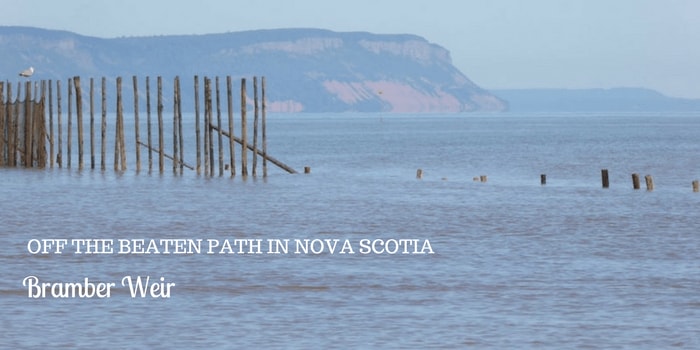
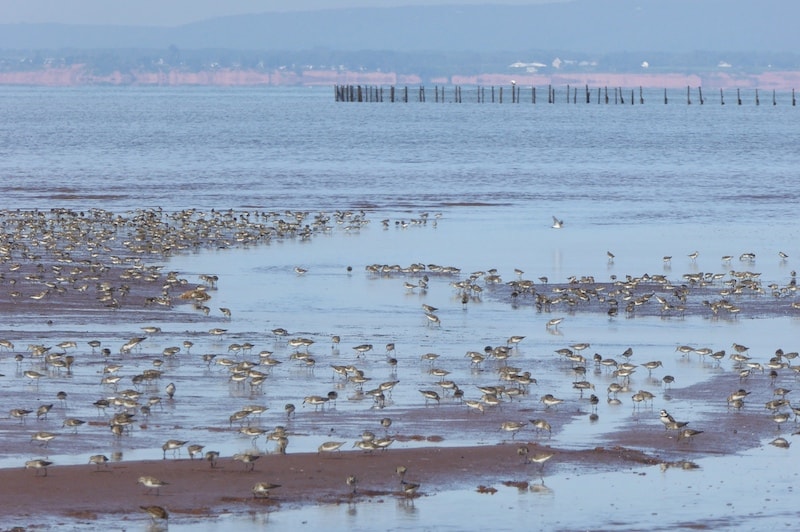
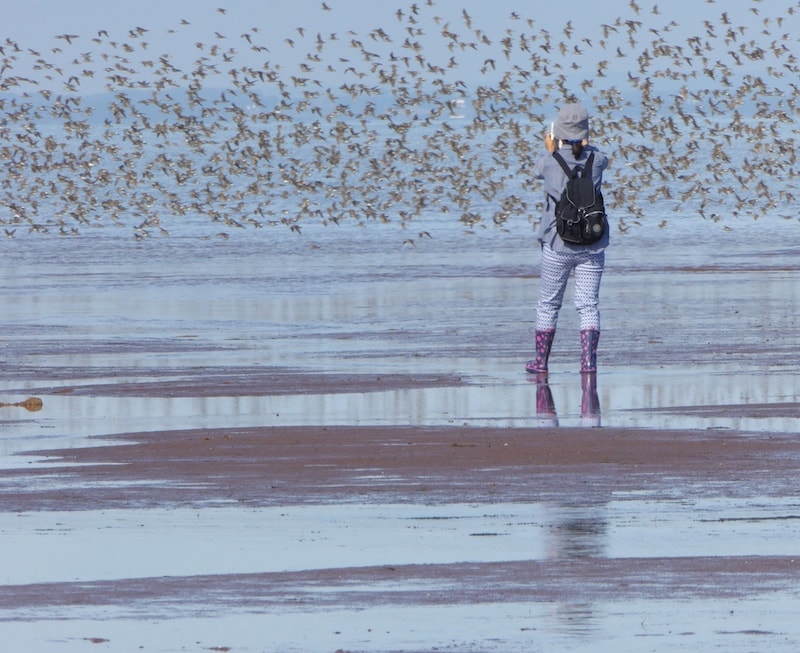
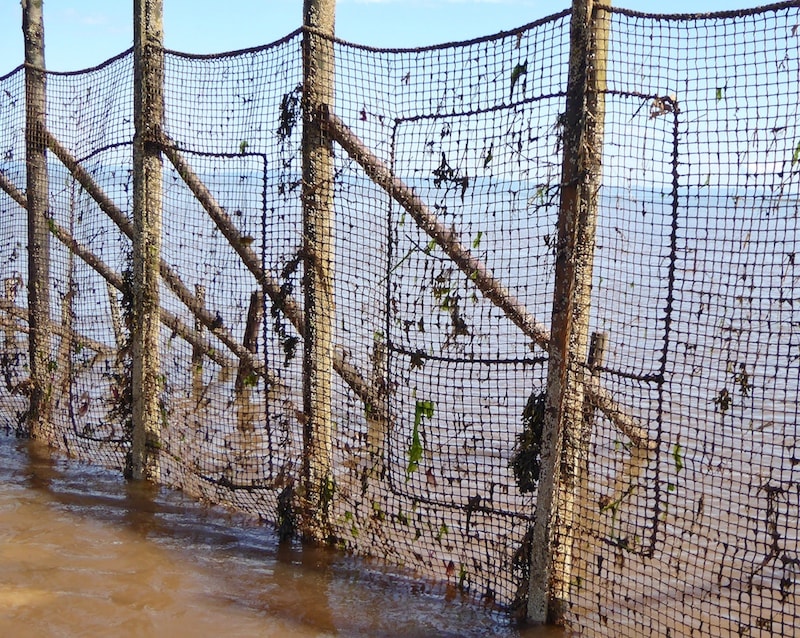
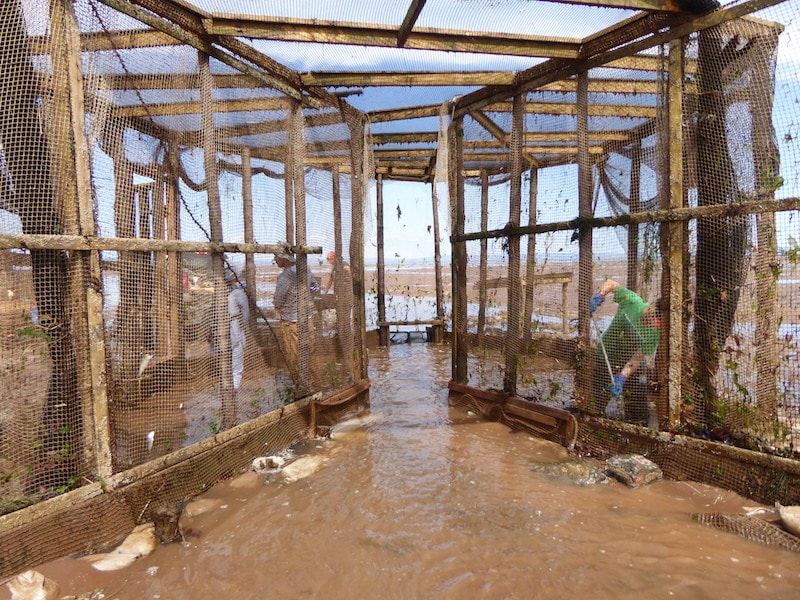
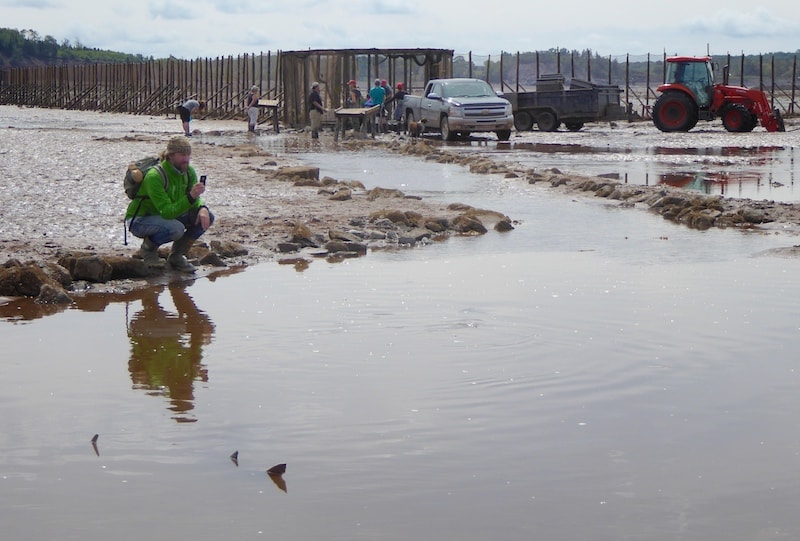
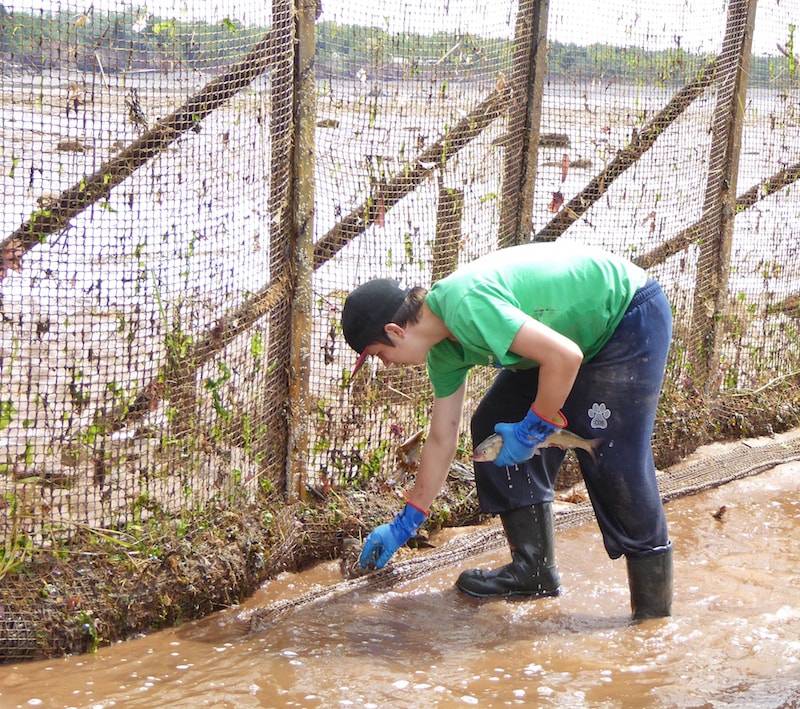
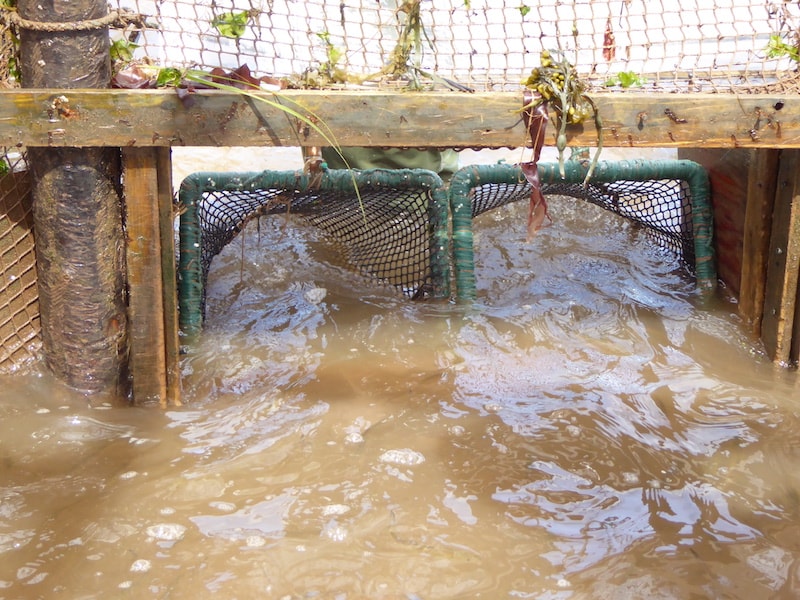
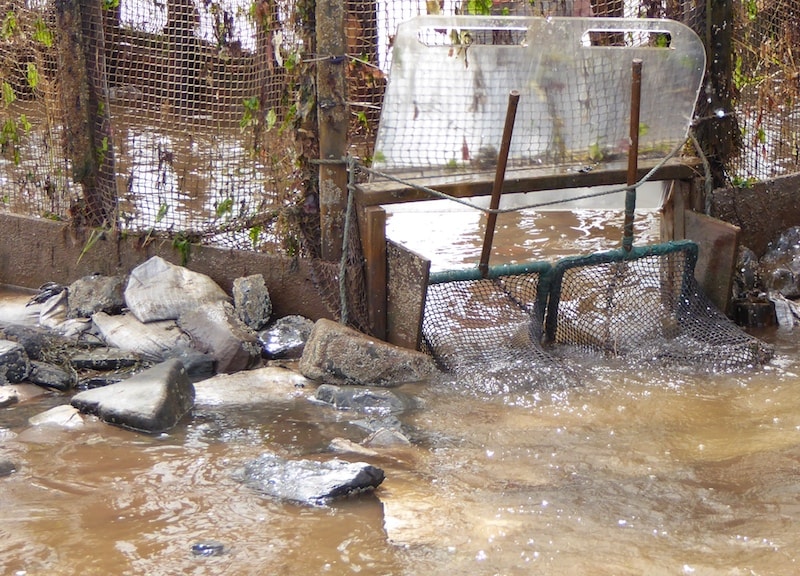
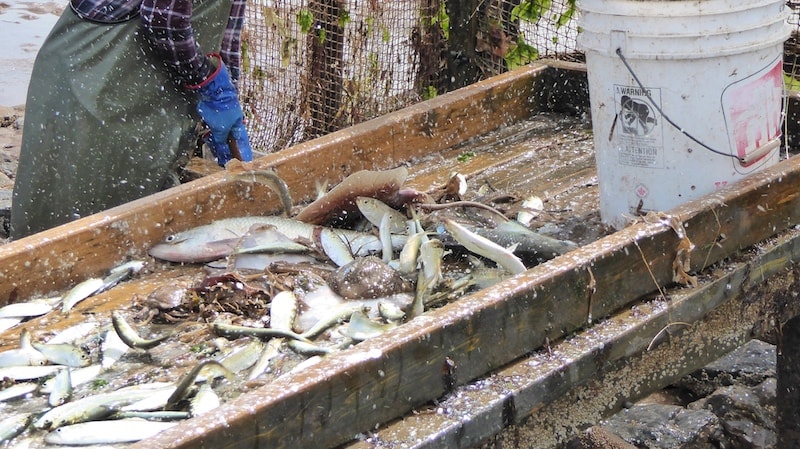
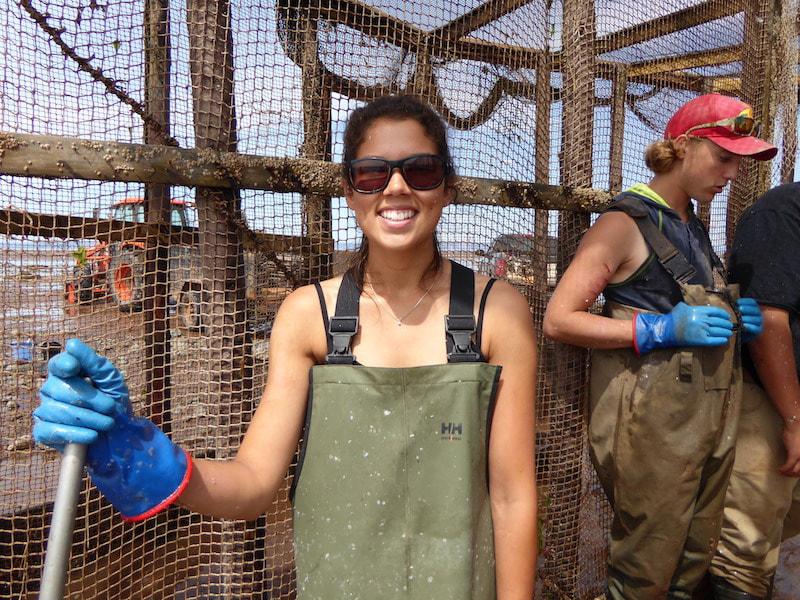
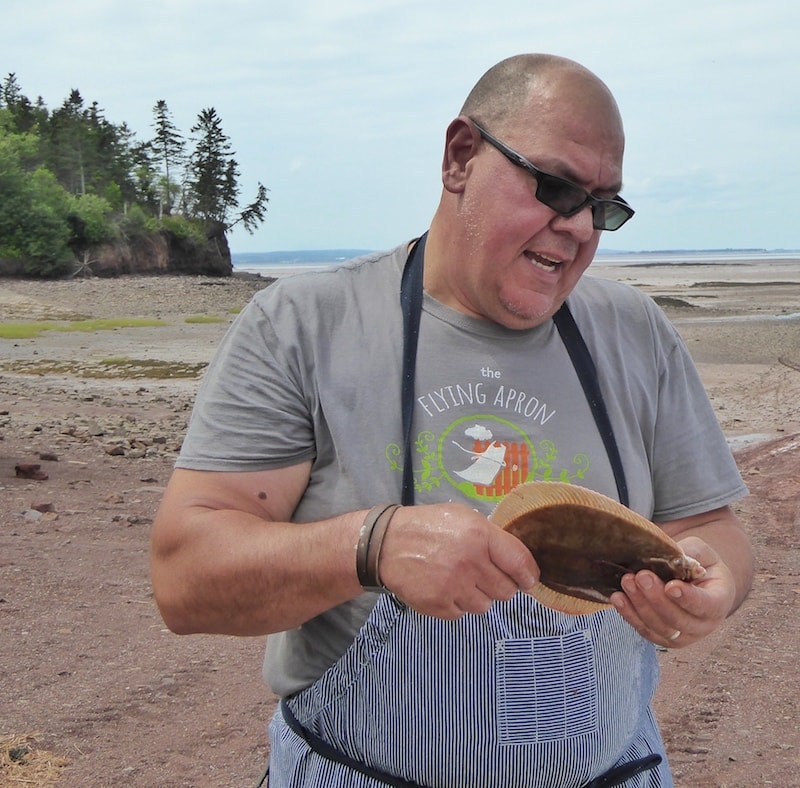
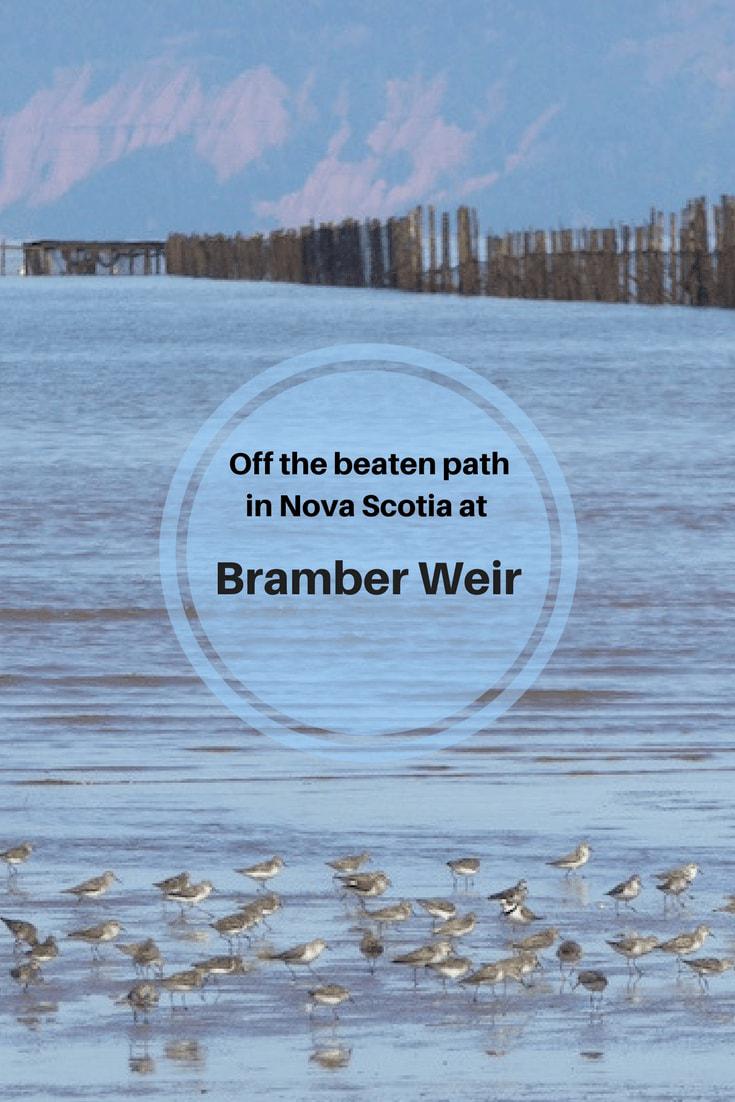




Interesting! Would love to see that and how it works! So many interesting things to see so near to us!!! Thank you again, Anne!
Might need to check this one out next summer…love stuff like this! Thanks for sharing!
You’d love it. Maybe we could organize un p’tit gang and make a day of it!!
Interesting fishing experience as I can tell from the pictures.